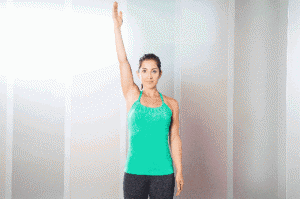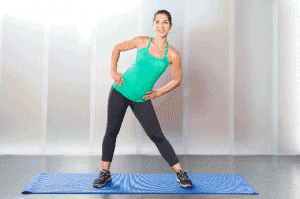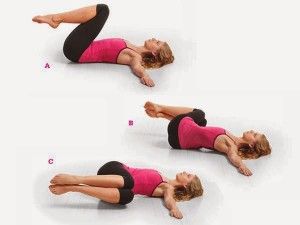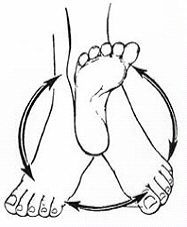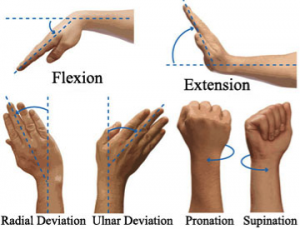 Joints, along with bones, muscles, tendons, ligaments and cartilage, form the musculoskeletal system that allows us to walk, run, jump and move in whatever way we want. Joints rely on movement to keep them functioning properly. Unlike muscles, joints have no direct blood supply. If there’s no motion in the joint it will degenerate. Joints rely on synovial fluid to “wash” away waste products that build up and compromise the integrity of the joint.
Joints, along with bones, muscles, tendons, ligaments and cartilage, form the musculoskeletal system that allows us to walk, run, jump and move in whatever way we want. Joints rely on movement to keep them functioning properly. Unlike muscles, joints have no direct blood supply. If there’s no motion in the joint it will degenerate. Joints rely on synovial fluid to “wash” away waste products that build up and compromise the integrity of the joint.
Why Is Joint Mobility Important?
A daily joint-mobility routine can keep your joints healthy and prevent stiffness, muscle imbalances and even arthritis. It can also restore lost range of motion, making exercise more enjoyable, enhancing your athletic performance and protecting you from common aches and pains. Joints that are able to move through their full range of motion allow connecting muscles to completely contract and expand, which gives muscles more strength and power and prevents injury.
Try out this full-body joint-mobility routine when you wake, before exercising or whenever you just need to loosen up and free yourself of tension.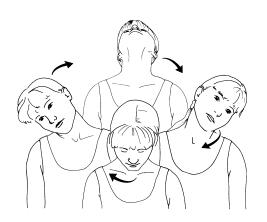
1. Neck Circles
With today’s craze of digital culture it just means hours spent in front of computer screen or staring down at a smartphone, this in tern can create postural deficiencies like forward-head posture. Forward-head posture causes stiffness in the joints in the cervical spine and elongates the muscles at the back of the neck and shoulders, creating knots and tension. Neck circles are a simple and effective exercise for releasing that tension.
HOW TO DO IT: Begin with proper posture: Stand tall with your feet shoulder-distance apart, a slight bend in the knees, navel drawn in, hips tucked under, arms resting at your sides, shoulders rolled back and neck in line with the spine. Drop your chin to your chest. Slowly roll your right ear over your right shoulder. Gently drop your head back and slowly roll your left ear over the left shoulder. Gently come back to center. Perform the first few repetitions on each side slowly and make them fluid. Repeat for five to 10 repetitions before switching directions and doing the same on the opposite side.
2. Backstroke
The ball-and-socket joint of the shoulder is the most mobile joint in the human body, but due to improper posture, motion can deteriorate over time. You must get the movement in the joints, we recommend practicing proper posture in the workplace and taking breaks to get your joints moving as well as keeping them hydrated. This classic swim stroke counteracts the negative effects of slouching shoulders.
HOW TO DO IT: Keep your arms straight and elbows locked as you lift one arm straight out in front of you and slowly circle it backwards. Try to avoid rotating the torso as you do so. Keep your hips squared forward, your shoulders packed down and attempt to get your biceps close to your ear at the top of the movement without allowing your shoulders to shrug. Repeat on the other side and keep alternating in a fluid motion for 10 to 20 repetitions per side.
3. Elbow Kickback Swoop-Around
HOW TO DO IT: Hinge forward at the hips just slightly while maintaining a flat back. Draw your elbows along the sides of your ribcage, with your arms forming a 90-degree angle. Make fists with your hands. Extend your arms back behind you, palms facing each other. In one fluid motion, swoop your arms around to the front as you internally rotate your arms to bring the backside of your hands together. Then externally rotate the arms and pull back to pinch your elbows to your sides as you return to the starting position. Keep repeating for five to 10 repetitions.
4. Pelvic Circles
Every time you land, something has to absorb the shock. The muscles, tendons and ligaments aren’t designed to do it all. You want the discs throughout the lumbar spine to absorb the shock. If something is jammed in the spine, that weight load is going to be translated to the muscles, tendons and ligaments. Over time, it leads to sprains, strains, knee and low-back pain. Lubricate your pelvic joints and lumbar spine with pelvic circles.
HOW TO DO IT: Stand with your feet hip-distance apart and your hands on your hips. Keep your feet planted and core contracted as you move your hips in a circular motion. Repeat five to 10 times in each direction.
5. Cat Cow
This traditional yoga pose is excellent for opening up the thoracic spine and lubricating the discs. If your thoracic spine is locked up, you will likely experience problems in the cervical and lumbar spine as well. When your spine is out of alignment, neurological issues may arise.
HOW TO DO IT: Begin on your hands and knees in a neutral-spine position. Inhale as you arch your back and tilt your head and tailbone upward, allowing your stomach to lower toward the floor. Exhale as you round out your back, pull the belly button in toward your spine and tuck your chin toward your chest. Repeat, following your breath, for five to 10 repetitions. If kneeling is too difficult, you can modify this pose by remaining standing and bending over slightly, supporting yourself with your hands on your knees.
6. Windshield Wiper
Hip mobility may help provide relief from low-back pain. If the hips are not mobile, the body destabilizes the lower back or knees to compensate for the lost range-of-motion potential. The high degree of lower-back pain and injuries and knee strain correlate directly to hip immobility, particularly from sustained sedentary seated lifestyle behaviors.
HOW TO DO IT: Sit on the floor with your knees bent in front of you, your feet flat on the ground close to your buttocks and your hands out to the sides behind your hips. Drop your knees to one side, keeping your sit bones on the ground. Without lifting your feet off the ground, lift your knees back through center and drop them to the other side. Repeat in a fluid motion for 10 repetitions per side.
7. Knee Circles
Knee pain is often the result of loss of mobility at the hips. This knee-circling exercise not only frees the muscles, tendons and ligaments around the knee joint, but it also frees the hips.
HOW TO DO IT: Begin standing. Bend one knee up so that your thigh is parallel to the floor. Hold on to a chair or ledge for balance if necessary. Extend your leg straight out in front of you. Circle at the knee as you bring the heel to the outside of your hip, through to starting position, then toward your opposite inner thigh and back around to the extended position. Perform five to 10 repetitions in each direction before switching legs.
8. Ankle Circles
Mobilizing your ankles may be just what you need in order to let go of nagging running injuries and finally ditch that knee brace for good.The ankle-roll mobility drill restores movement to the ankle and, as a result, restabilizes knee alignment in your gait as well as causing arches to stop falling and resolving pain from plantar fasciitis.
HOW TO DO IT: Stand or sit and lift one heel off the ground. Flex your foot, bring your toes toward your shin. Circle the ankle around and point your toes for full extension at the bottom of the movement before circling around to the starting position. Repeat for five to 10 repetitions in each direction on both legs.
9. Wrist Rolls
Working at a computer all day, gripping heavy weights at the gym or past wrist strains can lead immobility in the wrists. This can make effective body-weight exercises like push-ups and certain yoga poses uncomfortable or even impossible. Wrist rolls can help facilitate those movements.
HOW TO DO IT: With your arms outstretched in front of you, fully open your hands. Bring your fingers back toward your forearm, then circle at the wrist for five to 10 repetitions in each direction on both wrists.
